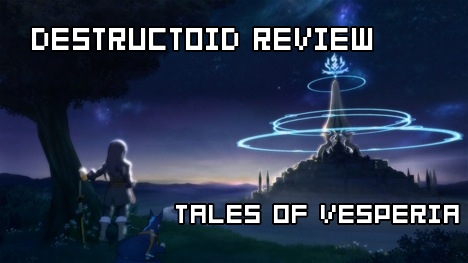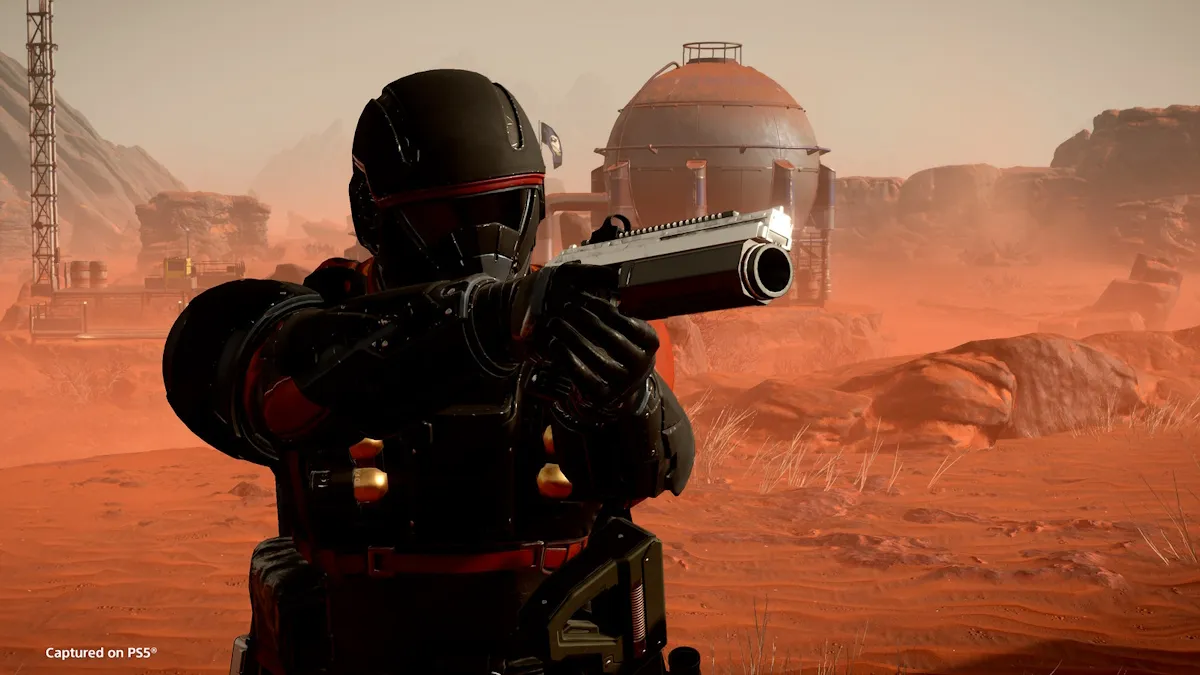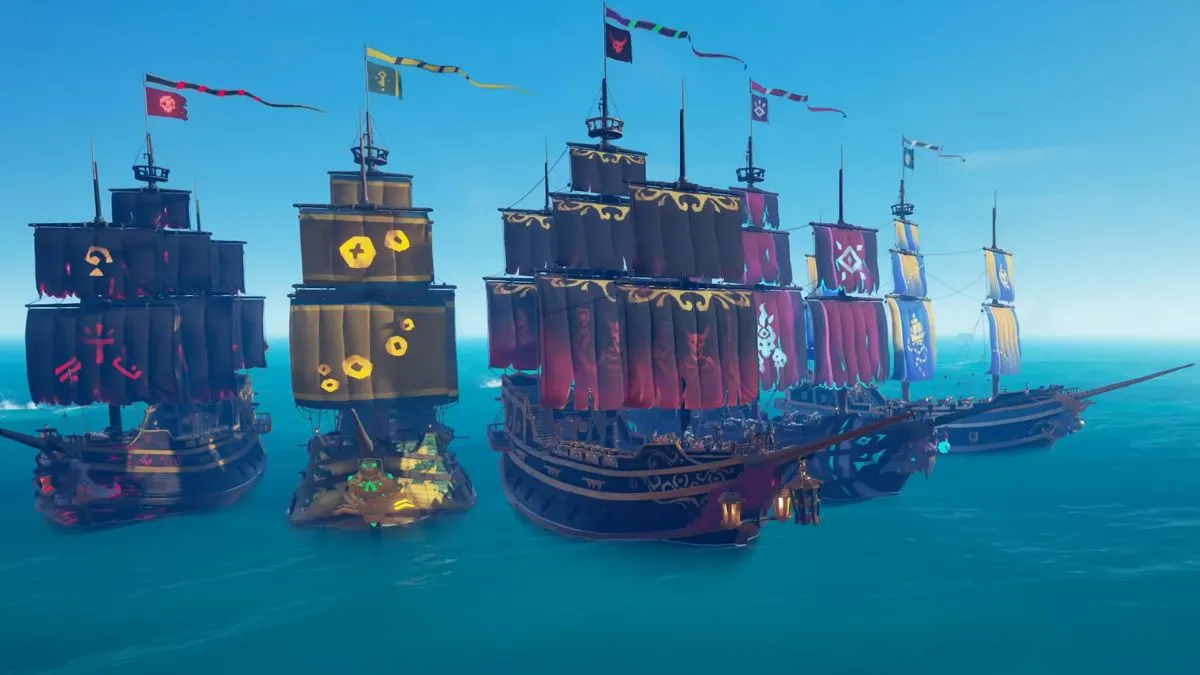The Japanese RPG never ceases to astound me. It is a nearly untouched genre, steeped firmly in tradition. It beckons players to grind for experience senselessly for hours on end with an overly simplified battle system. It entertains with the same archetypal build of protagonists, antagonists, and supporting characters. The genre’s males look like women, and the women look like 12-year-old girls. The games have multiple discs, hours of cut-scenes, and a massively linear style of exploration and gameplay.
Over the years, these cracks in the armor have turned into massive fissures, releasing steam and bubbling goo that have catalyzed the spawning of odd hybrids. One could surmise that the success of the Western RPG, which is typified by its non-linearity, often-complex story structure, and redefinition of battle, has aided in expanding the cracks into the gaping holes that we recognize now.
Tales of Vesperia resides in this transition period. It’s obvious that the developer, Namco Tales Studio, has tried to integrate part of the Western experience into its game. There are marked improvements in the genre itself, changes that were needed for the betterment of the series as a whole.
Taken out of transition context, how does Tales of Vesperia perform as a standalone title? Does it captivate, immerse, or entertain? Is the visual art a viable alternative? Is the battle system fluid and fun? Will it transcend the Tales series?
Hit the break and I’ll tell you.

Tales of Vesperia (Xbox 360)
Developed by Namco Tales Studios
Published by Namco Bandai Games
Released on August 26, 2008
The beginning of Tales of Vesperia revolves around the humble beginnings of a troubled youth named Yuri Lowell, who chooses to take off on a grand adventure in search of a thief. Yuri is the typical swashbuckling type, who favors aggression and rash alternatives to the majority of the obstacles that he faces. His decisions are typically poor over the course of the game, but they are always backed up with some ingrained wisdom that he gained in his mixed past.
The world that composes the game, Terca Lumireis, is a dangerous place filled to the brim with monsters and various other evil and undiscovered denizens. There is a shroud that hangs over Terca Lumireis in the form of an Empire. For the most part, the Empire is all-encompassing and serves to protect its citizens from the outside world. Thankfully, the job is a lot easier because of a barrier system that surrounds most of the civilizations. These barriers, powered by an object called a “bodhi blastia,” repel monster attacks that are all too frequent.
Because of the monsters on the outside, the denizens of Terca Lumireis rarely venture out into the wilderness. Only the knights of the Empire and the guilds (which are separate from the Empire) traverse the open world. It’s this sense of a great expanse outside of these barriers that composes the majority of conversation in the game.
Yuri used to be a knight of the Empire, but he fell out of the service as a result of a difference of opinion. Yuri’s childhood friend, Flynn Scifo, also joined the ranks with him. Flynn continues to be a knight and uphold chivalrous ordinances, whereas Yuri would rather be on his own and deliver his own unique sense of justice. The juxtaposition between Yuri’s outlandish behavior and Flynn’s upstanding is what defines the majority of the conflict in the game.

The story officially takes off after a bodhi blastia is stolen from the poor district in the Empire’s capital where Yuri lives. Yuri chooses to go after the thief and in the process intertwines himself with the politics of the Empire (via a noble named Estelle), and eventually a larger, greater threat to the land. As often is the case, the chase for the object takes Yuri outside the barriers of the world into conflict, strife, victory, and toil.
The majority of the strife in the game resides in battle with monsters, and the battle system is where the majority of the fun can be had. Monsters appear on-screen, so battle is always initiated somewhat willingly by running into the monsters that occupy the varying landscapes and dungeons in the game. Once battle has begun, it is a fairly simple affair. The system is based in real time, with the exclusion of the menus for items and equipment that can be accessed in the middle of a confrontation.
The main problem with the story of Vesperia is that it reeks of mediocrity. The story, while imaginative, is far too simple considering its proposed subject matter. The politics of the fractured Empire are treated very lightly and the systems that lie outside of the Empire are barely mentioned, with the exception of the Guilds. For the first 15 hours, the Guilds are only whimsically mentioned, but even when they propel themselves to the forefront of the story, it is only done so to get to the next plot point. There are no thrills in this dichotomy. Another topic of note is how wishy-washy the villains in the game are. While it is easy to appreciate the lack of a true centralized enemy initially, it becomes very stale trying to figure out whom exactly to hate. Vesperia treats it as a mystery, but if anything, it only comes across as boring. Also, the dialogue is worthless and juvenile at best. There is a point in the middle of the game where a fascinating decision is made, one that transcends the majority of conventions in the game. Yet, instead of building on that positive, almost adult momentum, the game gasps for breath and retreats into the same childish mode almost immediately thereafter. It is highly disappointing, but not altogether terrible.
Fighting proficiently in Tales of Vesperia requires the player to master the combo system utilized in the game. A combo consists of normal attacks, and can also include “Artes.” The normal attack is initiated with a button press, but can be elaborated with the use of the left analog stick. Thrusting requires a horizontal depression, while an air attack necessitates a vertical depression. The general rule of thumb is that three normal attacks can be utilized before using two Artes. Artes are the game’s special attacks and are acquired through fighting, leveling up, and getting to a specific story objective. Artes can be used at any time during battle, but their real place in battle is after an onslaught of melee attacks. Artes drain TP (Vesperia’s MP equivalent) and can be assigned to specific depressions of the right analog stick. This minor bit of customization becomes critical during boss fights, because often, the difference between life and death in the game is knowing exactly how to pull off large combinations of attacks.

The kinks in the battle system’s armor appear when the player moves outside the central conflict and into the menu system. Picking out items and targeting members of the party or different enemies can be a hassle. Also, the block option in the game leaves much to be desired. While blocking an enemy’s attacks, the character can do nothing but hold up his weapon. After the enemy finishes attacking, the game quite often just restarts the onslaught. In this way, the game forces players to take their lumps in battle. After a few fights, players will realize that the block button is completely useless. One thing that really hurts the game’s battle system is the massive battles themselves. Vesperia is better suited for one-on-one fighting, but often throws three to seven monsters into each battle. That means getting hit on multiple fronts by multiple creatures in uncontrollable waves, which then translates to wasting health items and healing TP all because of how the system is weighted toward the individual rather than the group. Some Artes effect areas, but those are few and far between (and not necessarily effective) within the game. Another odd point is that the game doesn’t reveal everything about the battle system until very late into the game (about 20-ish hours) when players will learn about the second degree of an attack called “Over Limits.” In fact, it takes several hours to learn about Fatal Strikes “FS Chains,” Over Limits, and Secret Missions. It’s silly not to put all the tools for the fighting system in the player’s hands from the get-go. These aforementioned higher-level attacks directly tie into the combo system, and really serve the best purposes during a boss fight.
Weapons, armor, and other various fighting tools can be bought and assembled in stores. Vesperia has two distinct crafting systems, both of which are easier than anything in an MMO. The first is the “Synthesis” system, which allows players to craft their own weapons, armor, and items from scraps picked up in battle. The scraps are easily obtained and putting together the items is done at a store. It is a fairly fluid and painless process. There is also a “Cooking” system, which allows players to create tasty meals from a list of discovered recipes. The cooking is the epitome of tacked-on. It’s supposedly an experience-based system that gives players certain modifications during battle — but it really ends up being a silly hassle with little application.
There are three areas that compose the rest of the gameplay. There is the basic world map, cities, and different variants of dungeons. The world map is the same thing RPG fans have had to traverse for years: dots appearing on a mini-map to indicate important places like cities and dungeons, and it’s all very straightforward. Cities and dungeons are much the same. There is very little exploration allowed in Vesperia, to the point that it is nearly maddening. Sides of buildings are blocked off with invisible walls, structures are always locked before being prompted in the story, and leaving areas is forbidden unless specific story objectives have been accomplished. There are, of course, a few scattered treasures for the lucky ones that find an unlocked door in a place where “exploration” is supposed to occur, but it is a very tightly-wound experience. For the most part, Vesperia is about watching the story unfold and fighting monsters. Neither of these things function to any spectacular degree.

Vesperia has a very iconic look and feel. The visuals are constructed to look as if the game was hand-drawn. The delicate touches on the majority of objects, places, people, and creatures are much appreciated. The palate is especially vivid, and very welcome in this day and age of Unreal Engine 3. More importantly, the visuals never impede or supersede the experience of the game. If anything, they serve to highlight the best qualities of Vesperia. Only when the game is paused is the illusion of the world broken, when jagged edges appear throughout.
The score of the game is not profound or particularly irritating. Battle music never becomes repetitive, which is always an important feature in an RPG. The voice acting in the game (utilized in every cut-scene) is decent considering the material, but a small protagonist that is drawn into the party early in the game has a terribly annoying voice. If only this character would stay dead after falling in battle.
Overall, Tales of Vesperia is a mediocre offering. It never truly captures the imagination nor has the ability to draw a person into its fantasy world. The battle system suffices, but it often stumbles over its own feet when it comes to item and enemy selection. The scripting is poor, and the game is woefully linear. The storyline, while seemingly profound, never reaches a level that requires thought or grabs the player. The one opportunity that Vesperia had to do that was wasted entirely.
Score: 6.0 (Decent. Slightly above average, maybe a little niche. But you wouldn’t recommend it to everybody.)





